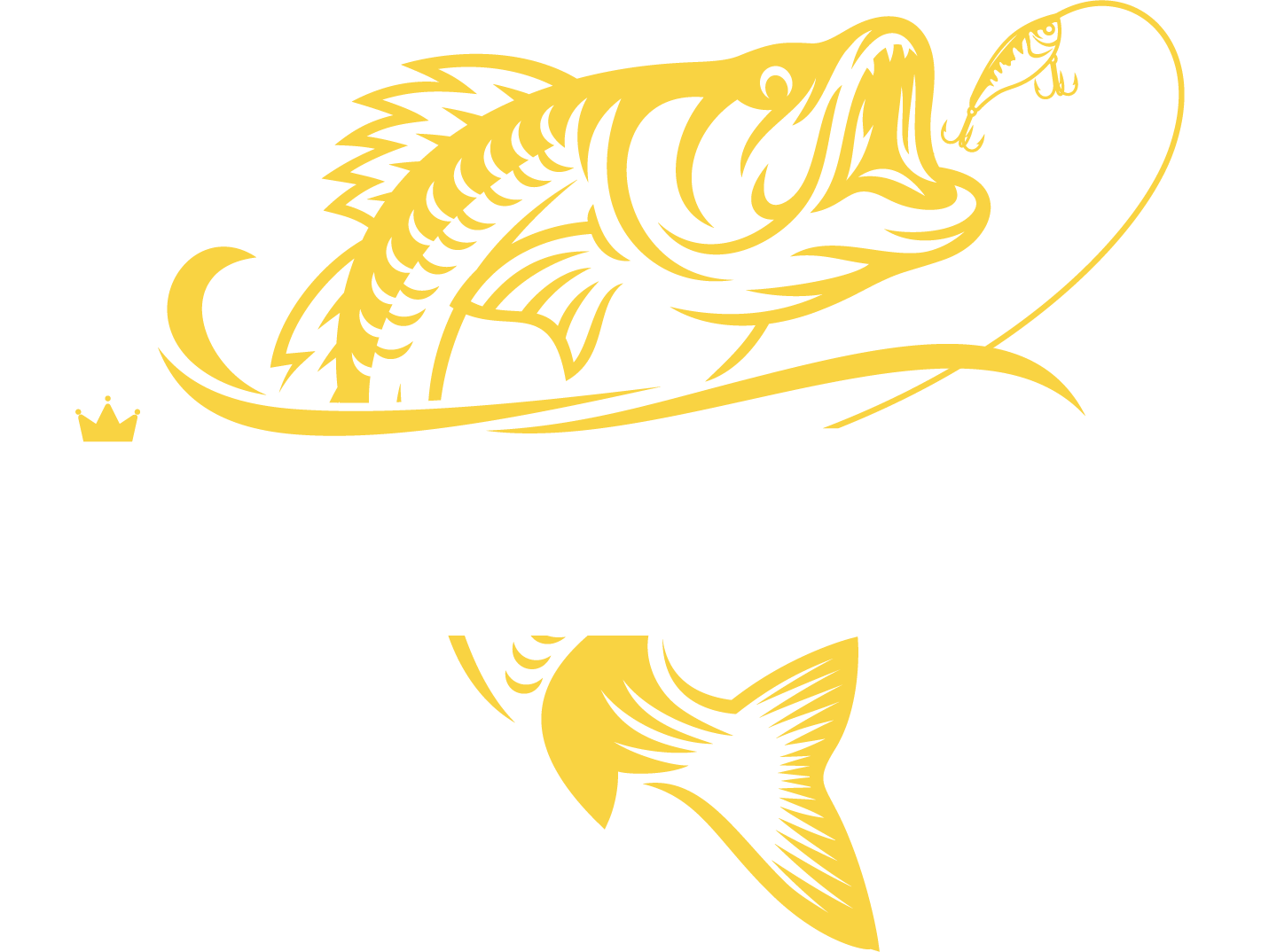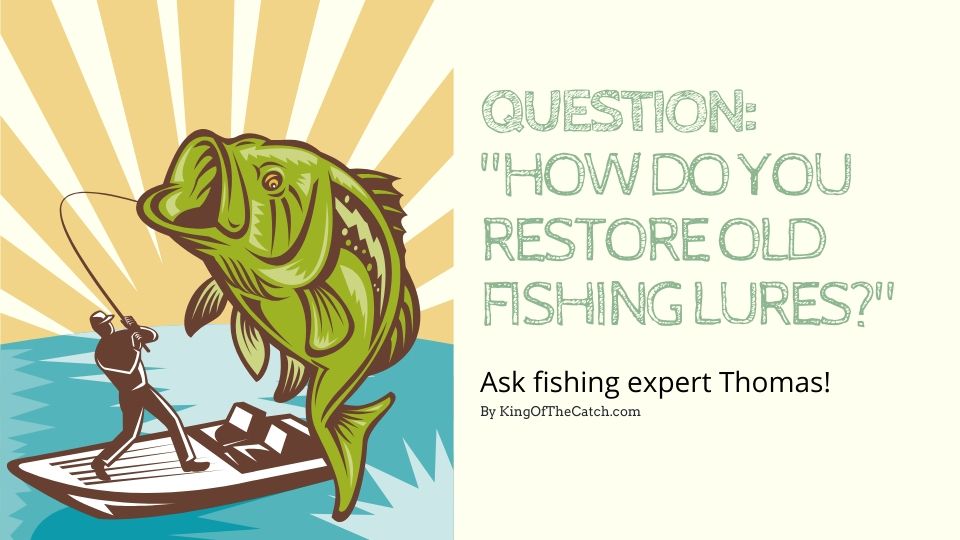Are you going on a fishing trip down to your favorite lake this summer? Well! I sure hope you have all of your fishing gears cleaned up and polished. Especially, your fishing lures to find some of the biggest catch this season. It is always important to clean and restore your old fishing lures as they come in quite handy.
Since I am quite a fishing buff myself, I can throw in some light for you on this issue. I have restored some pretty old fishing lures before, and so I can easily show you how to go about it. You might want to make a hot cup of tea and enjoy reading the article about the interesting ways on how you can restore your old fishing lures.
How Do You Restore Old Fishing Lures?
Question: Hi, I am Natalie, 40 from Adelaide, Australia, and I have a question. I am going on a fishing trip with my husband. We have quite a few fishing lures that have lost their touch overtime. I was wondering if we could somehow restore them to its original state? So, we can use them on our trip. I would really appreciate your help on this matter.
Answer: Hello there, Natalie. I am Thomas, and I will be more than happy to answer your query. The question you asked is very helpful and needed today. Lures are expensive, and it is always economical and smart to restore the old lures instead of purchasing a new one from the market.
Before I get into the breakdown of the process of restoring the old fishing lures, I want you to understand the importance of old fishing lures. They are not just expensive, but these lures are not as dispensable as one would think. Whenever you find any of these lures lying around or forgotten somewhere, please don’t dispose of it.
With the right process and technique, you will see how easily it can be reusable again. You can always restore its functionality and luster with a few steps.
Few simple steps to restore your old fishing lure
Step 1: Removal of Split Rings and Hooks
The split rings and hooks are the go-to removal parts when you come across an abandoned fishing lure. The metallic parts are extremely vulnerable to rust within a few numbers of days. Long exposure to rusting can cause the lure to become completely useless.
The hooks that have been corroded should be replaced at the earliest. So, what I usually do is, I remove all of them with a pair of side cutters even though they look slightly salvageable. They don’t come with an expensive price tag and are easily replaceable.
So, I am simply not taking up the risk. Plus, it provides a safe and easy cleaning process. It is also best to replace the hooks with the right size and weight. So, you don’t face any issues ahead regarding the action of the lure.
Step 2: Rinsing with Warm Water
After you remove the old fishing lure’s components, it is imperative to utilize warm water in rinsing the lure. It is done to remove the abrasive impurities that are present in the lure. It is advisable not to scrub beforehand as it can cause damages that are irreparable.
The lure has a clear paint and coat that shouldn’t be handled with scrubbing. You will be tempted to rub the lure’s surface with your fingers. But it is best to avoid it and get the hold of a spray setting from your kitchen sink to rinse areas of the lure that are tough and stubborn.
Step 3: Dish Soap Rubbing
First, you should run your fingers on the surface of the lure to check if there is any dirt. If you can’t feel any dirt, you can apply a generous amount of the dawn dish soap to a wet paper towel. Then you can rub the surface of the lure gently.
This process of rubbing with the dish soap will remove any or all of the grime left on the lure’s surface. After that, you should run your fingers down the surface of the lure for every few seconds. You can start scrubbing with the help of the wet paper towel if you get a smooth surface. The smoother it is, the harder you can start scrubbing.
You can avail the Amazon #1 Bestseller Dawn Platinum Dishwashing Liquid Dish Soap to clean the lures. It has a powerful grease 4x cleaning power and leaves a refreshing scent.
Step 4: Use of a Toothbrush & Toilet Bowel Cleaner
Yes! Dish soaps can go a long way in cleaning your old fishing lures. However, there will still be some areas that need our attention. I strongly recommend you to never utilize and sort of harsh cleaners that has alcohol in it. It will strip and damage the clear coat as well as the paint from your lure.
A Toothbrush with soft bristles along with a toilet bowl cleaner that is non-abrasive will go a long way in providing satisfactory results. You can spray a generous quantity of the cleaner on the surface of the lure. Then you can wet the toothbrush and gently scrub the affected areas. You can scrub the lure in a circular motion as it offers a quicker result.
I highly suggest you keep rinsing all through the process. In this way, you can avoid the risk of damaging the coat and paint of your lure. I always scrub for a span of 20 seconds and rinse it. Then I check to always make sure that my lure is keeping up well. I apply the cleaner again and carry on with my scrubbing.
And one more thing! Please do not forget to scrub the bill area and other joints present in the lure as well. A lot of crudes are highly present in these areas as a result of exposure to a number of elements. Please make sure to be as delicate as you can all throughout the process.
You can purchase the Dental Expert 5 Pack Charcoal Toothbrush to scrub the lures. It has soft and effective bristles that will be perfect for your lures.
Step 5: The Final Rinsing
You have to use warm water to rinse off all cleaner present in the lure. I sprayed my lures with the help of a hose. It does an excellent job of removing all the impurities present on the lure. You can do it outside to avoid getting water everywhere in your room.
Also, make sure to be gentle with the hose and avoid doing it at high pressure. You will damage the coat and paint of the lure with high pressure of water. Always make sure that no remainder is left present on the surface and corners of the lure before you proceed.
Step 6: Utilize Light Oil
You have to apply a light oil only on the jointed lures. This step isn’t compulsory for the traditional hard lures. In case you get lucky enough to come across a fancy swimbait or a glide bait, it will do wonders for them to move easily.
You can apply it to any other traditional hard lures as well. Once I had some trouble with one of my lures, which had trouble moving from side to side. After I applied some of the oil, I was able to function it flawlessly within seconds.
You can use the 3-IN-ONE 10038 Multi-Purpose Oil 8 Oz to apply on your lure. It lubricates, cleans, and penetrates rust. It will protect against corrosion and rust.
Step 7: Apply Spray Wax
I found an old Lucky Craft Fishing Lure CIF Flash Minnow 110 at the bottom of a nearby lake once. I did all the necessary steps mentioned above and finally topped the lure off with some Lucas Slick Mist Speed Wax. I let it sit for around 5 to 10 seconds.
Then I used a microfiber rag to rub it. I rubbed the lure till it dried. Then I used another microfiber rag to polish the surfaces. The outcome is incredibly breathtaking. You can also use other good quality spray waxes to get the job done.
Good luck!
Thomas

Niels Thomas is a wildlife expert and fishing fanatic that works with major fishing brands like Deeper Sonar, Abu Garcia, Berkley, PENN, BassPro and Pure Fishing. Through sharing the best fishing tips, tricks, gear reviews, locations and much more he hopes to inspire fishing fanatics to start their own journey towards becoming the King of the Catch!

